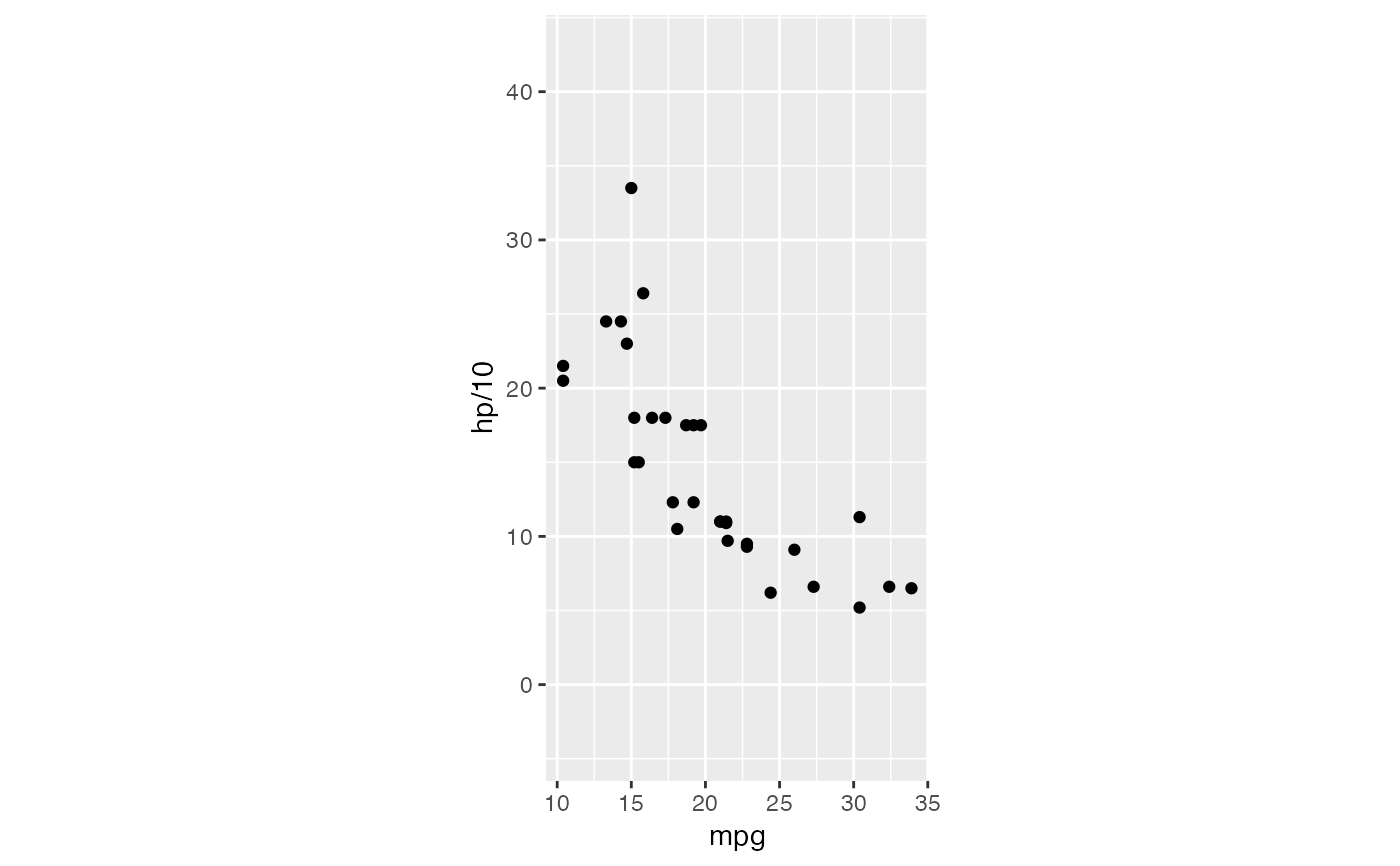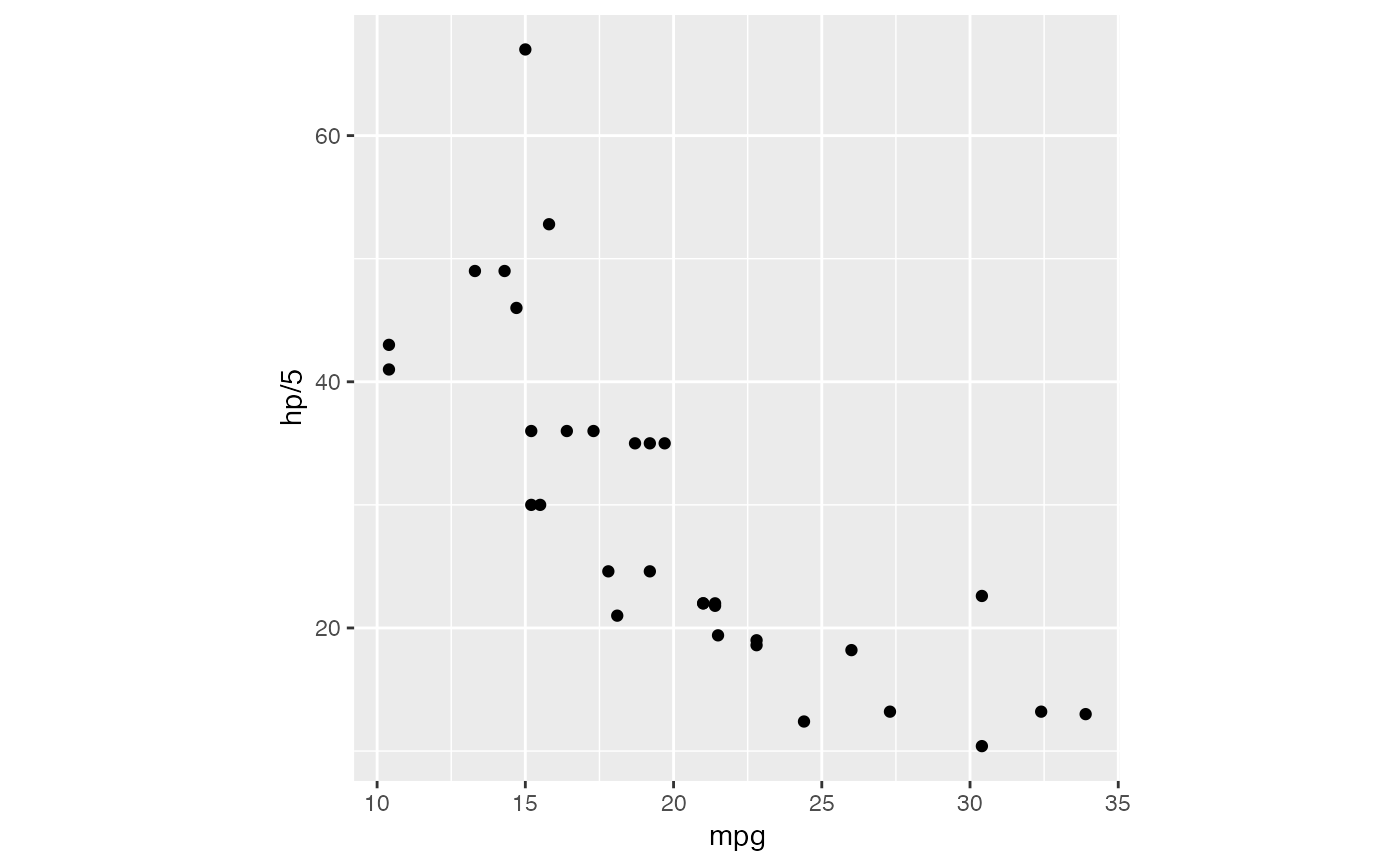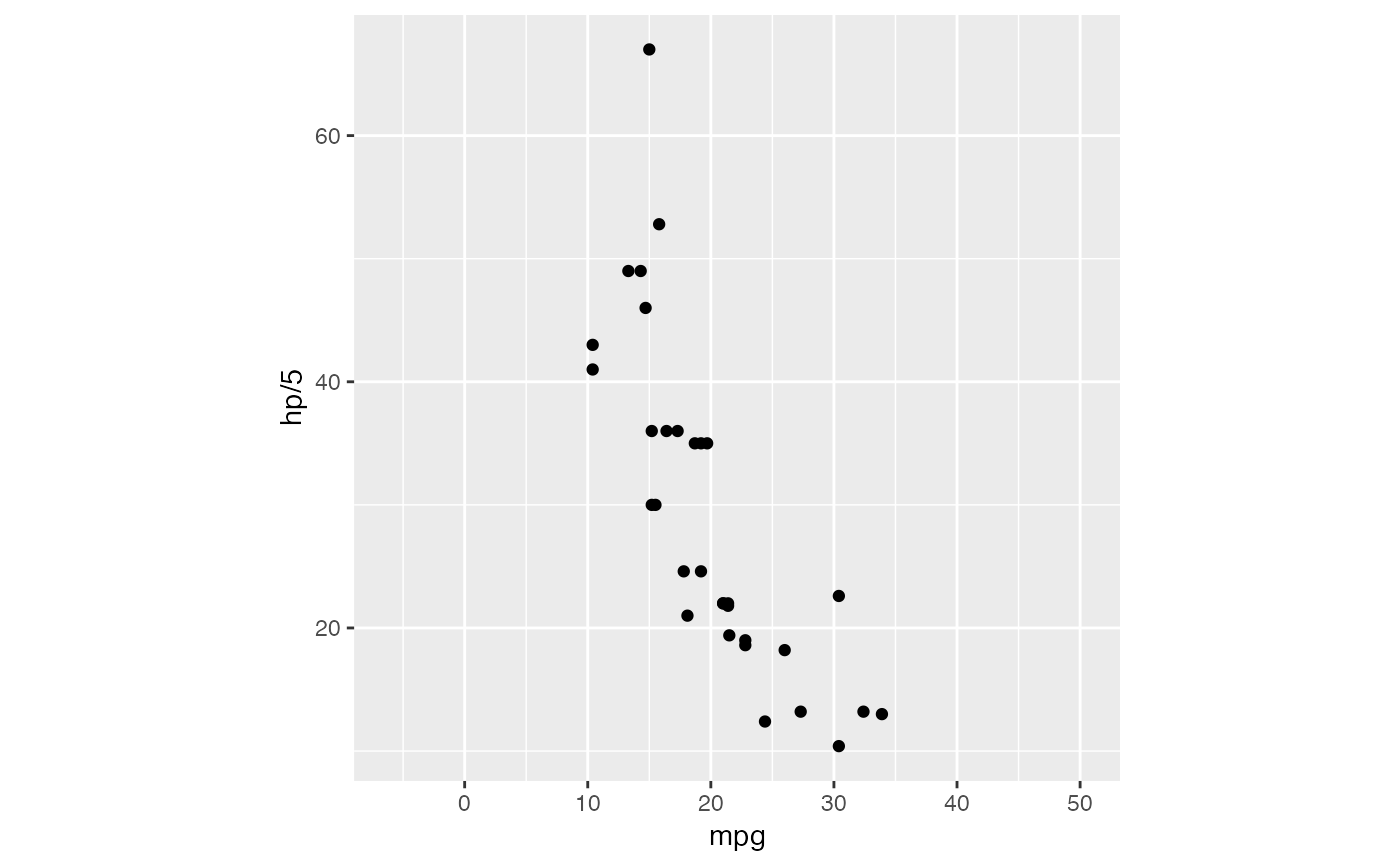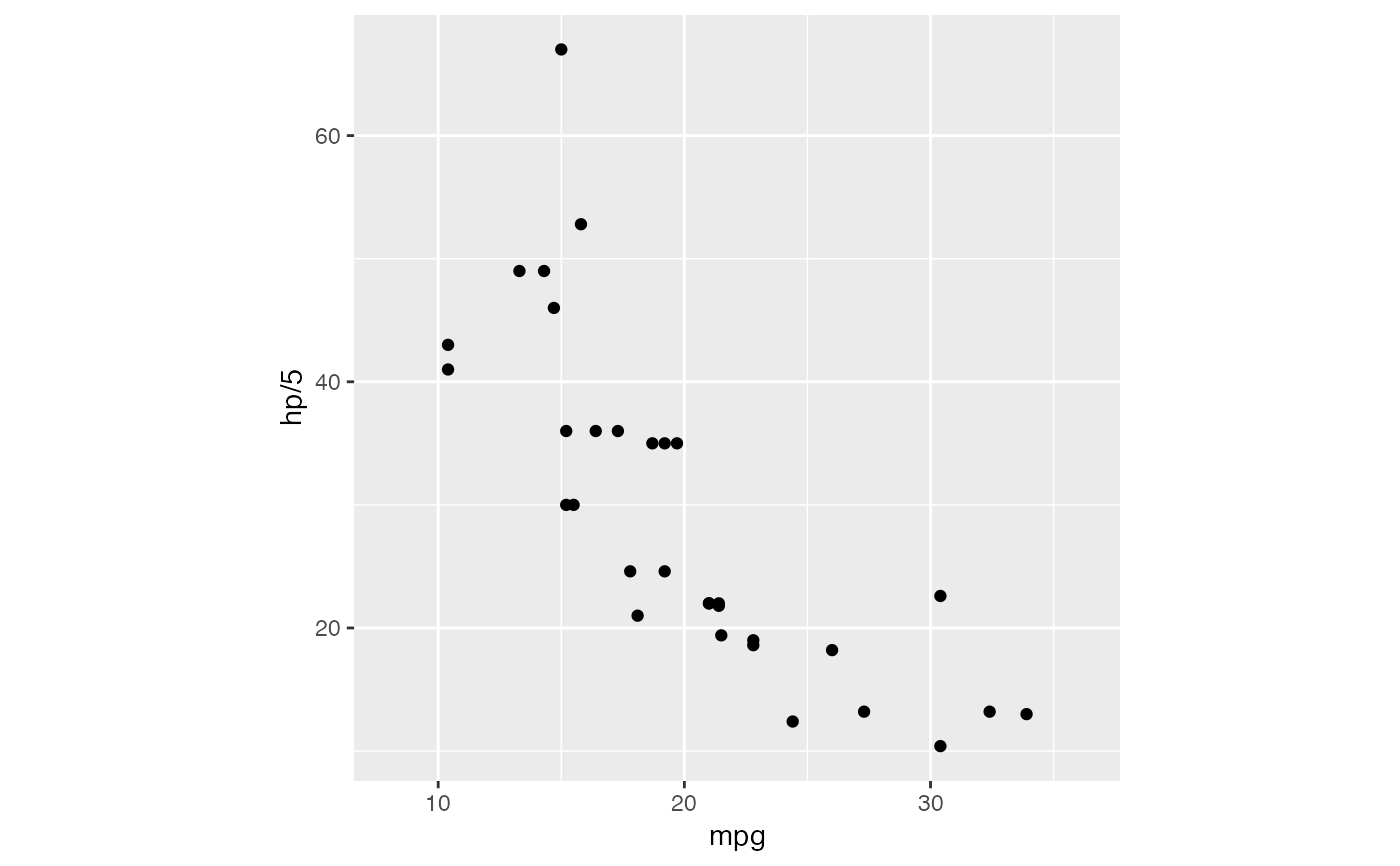2- (and 3-) dimensional biplots require that coordinates lie on
the same scale but may additionally benefit from a square plotting window.
While CoordRect provides control of coordinate and window aspect ratios,
the convenience CoordScaffold system also fixes the coordinate aspect
ratio at 1 and gives the user control only of the plotting window.
Arguments
- window_ratio
aspect ratio of plotting window
- xlim, ylim
Limits for the x and y axes.
- expand
If
TRUE, the default, adds a small expansion factor to the limits to ensure that data and axes don't overlap. IfFALSE, limits are taken exactly from the data orxlim/ylim.- clip
Should drawing be clipped to the extent of the plot panel? A setting of
"on"(the default) means yes, and a setting of"off"means no. In most cases, the default of"on"should not be changed, as settingclip = "off"can cause unexpected results. It allows drawing of data points anywhere on the plot, including in the plot margins. If limits are set viaxlimandylimand some data points fall outside those limits, then those data points may show up in places such as the axes, the legend, the plot title, or the plot margins.
Examples
# resize the plot to see that the specified aspect ratio is maintained
p <- ggplot(mtcars, aes(mpg, hp/10)) + geom_point()
p + coord_scaffold()
 p + coord_scaffold(window_ratio = 2)
p + coord_scaffold(window_ratio = 2)
 # prevent rescaling in response to `theme()` aspect ratio
p <- ggplot(mtcars, aes(mpg, hp/5)) + geom_point()
p + coord_equal() + theme(aspect.ratio = 1)
# prevent rescaling in response to `theme()` aspect ratio
p <- ggplot(mtcars, aes(mpg, hp/5)) + geom_point()
p + coord_equal() + theme(aspect.ratio = 1)
 p + coord_scaffold() + theme(aspect.ratio = 1)
p + coord_scaffold() + theme(aspect.ratio = 1)
 # NB: `theme(aspect.ratio = )` overrides `Coord*$aspect`:
p + coord_fixed(ratio = 1) + theme(aspect.ratio = 1)
# NB: `theme(aspect.ratio = )` overrides `Coord*$aspect`:
p + coord_fixed(ratio = 1) + theme(aspect.ratio = 1)
 p + coord_scaffold(window_ratio = 2) + theme(aspect.ratio = 1)
p + coord_scaffold(window_ratio = 2) + theme(aspect.ratio = 1)
